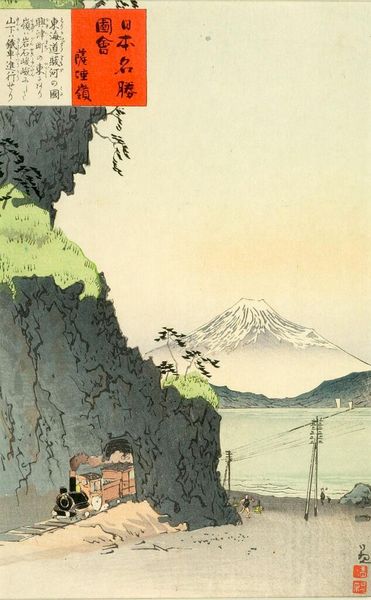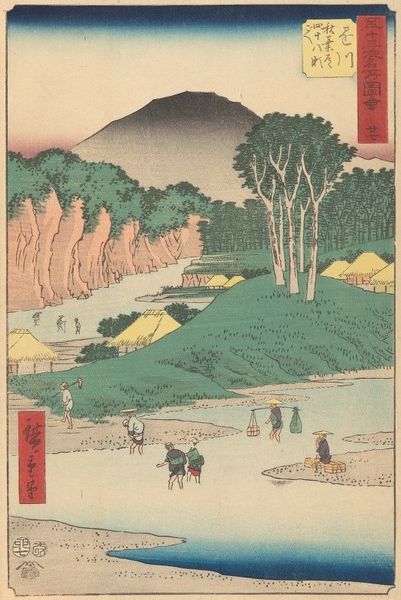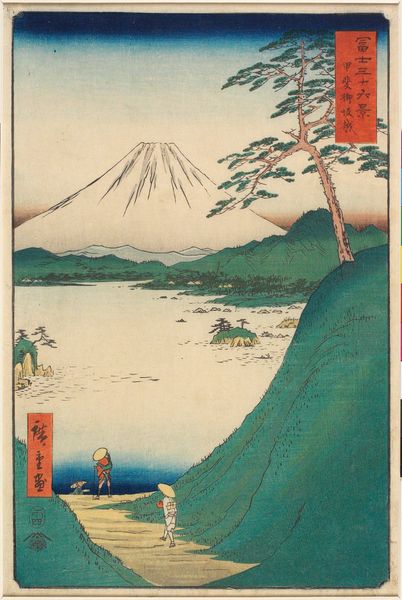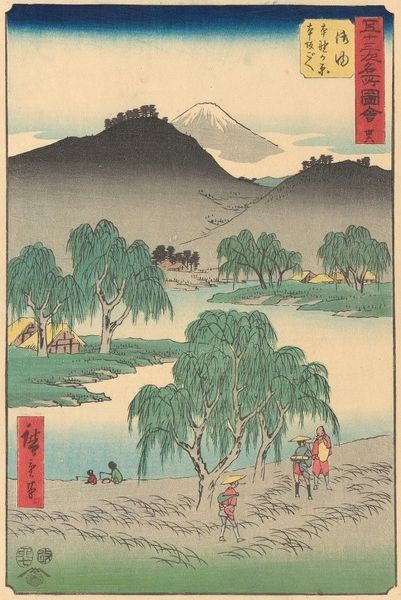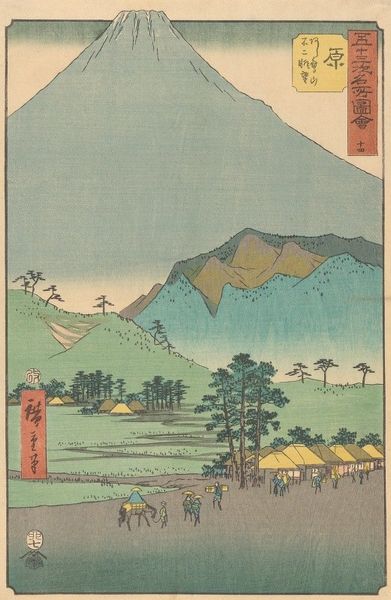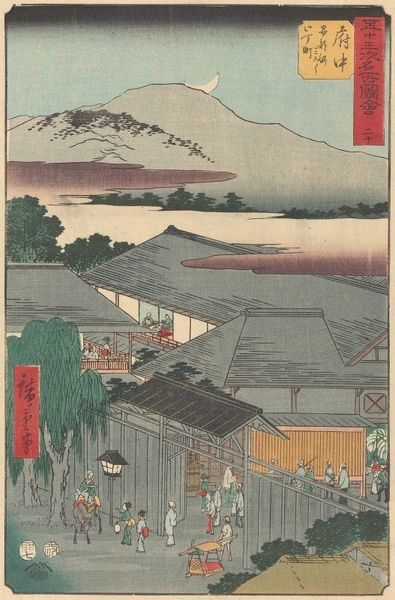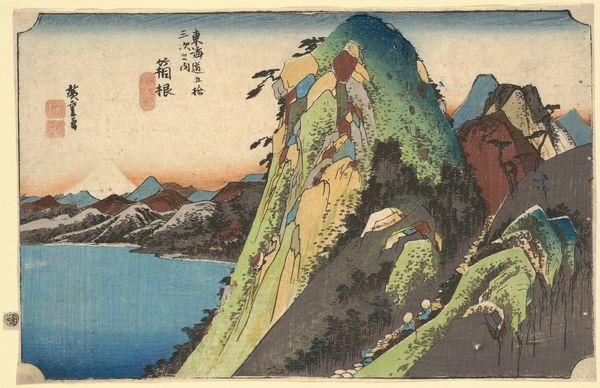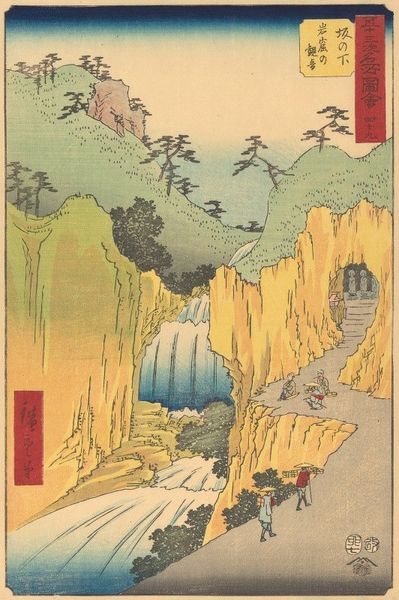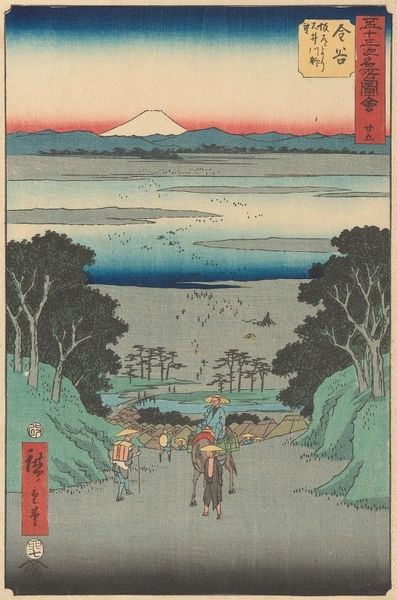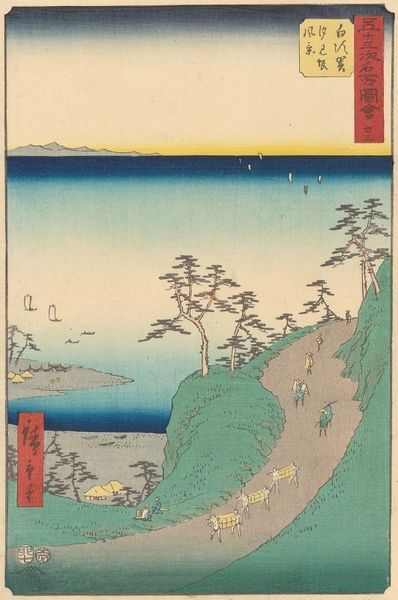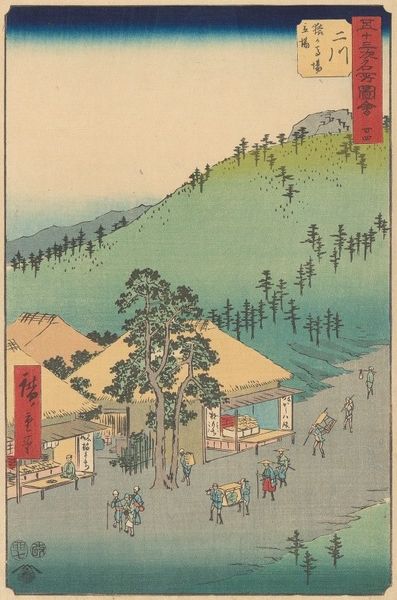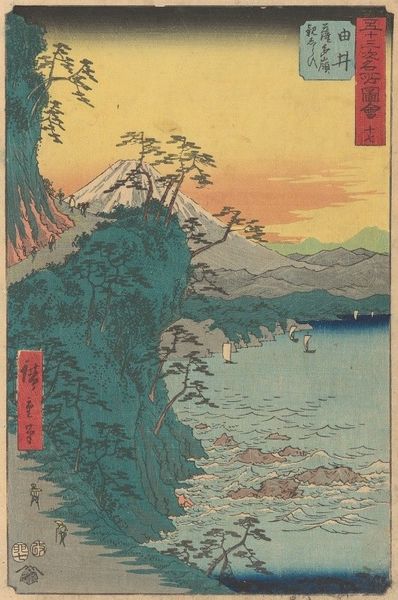
Copyright: Public Domain: Artvee
Editor: Here we have Kiyochika's "Satta Pass on the Tōkaidō" from 1896, a color woodblock print. I'm really struck by the composition. It's such an interesting mix of the natural, with the craggy cliff and Mt. Fuji in the distance, and the man-made, with the train and telegraph poles. How do you interpret this work? Curator: From a formal perspective, the dramatic diagonal created by the cliff dominates the composition, dividing the picture plane into distinct zones. This line draws the eye from the dark, textured foreground toward the serene, almost ethereal, background. Consider how the artist juxtaposes the rough texture of the rock against the smooth, uncluttered space surrounding Mount Fuji. Do you notice how this contrast functions? Editor: I see what you mean. It's like the hard, industrial age bursting into this tranquil, almost timeless, scene. Curator: Precisely. The woodblock technique lends itself well to these stark contrasts. Look at the areas of flat color against the fine lines used to delineate the rocks and the mountain. Kiyochika's command of line and form are what allow this relatively simple image to evoke such a sense of depth and space. The presence of the train, almost secondary to the landscape, acts as a device to heighten the overall impact. Editor: That's a helpful way to break down the image's effects. Curator: I am glad. Examining art in terms of its components and arrangements—that is a profitable endeavor, don't you agree? Editor: Absolutely! Looking at the elements first lets us discover deeper layers. Thanks!
Comments
No comments
Be the first to comment and join the conversation on the ultimate creative platform.
